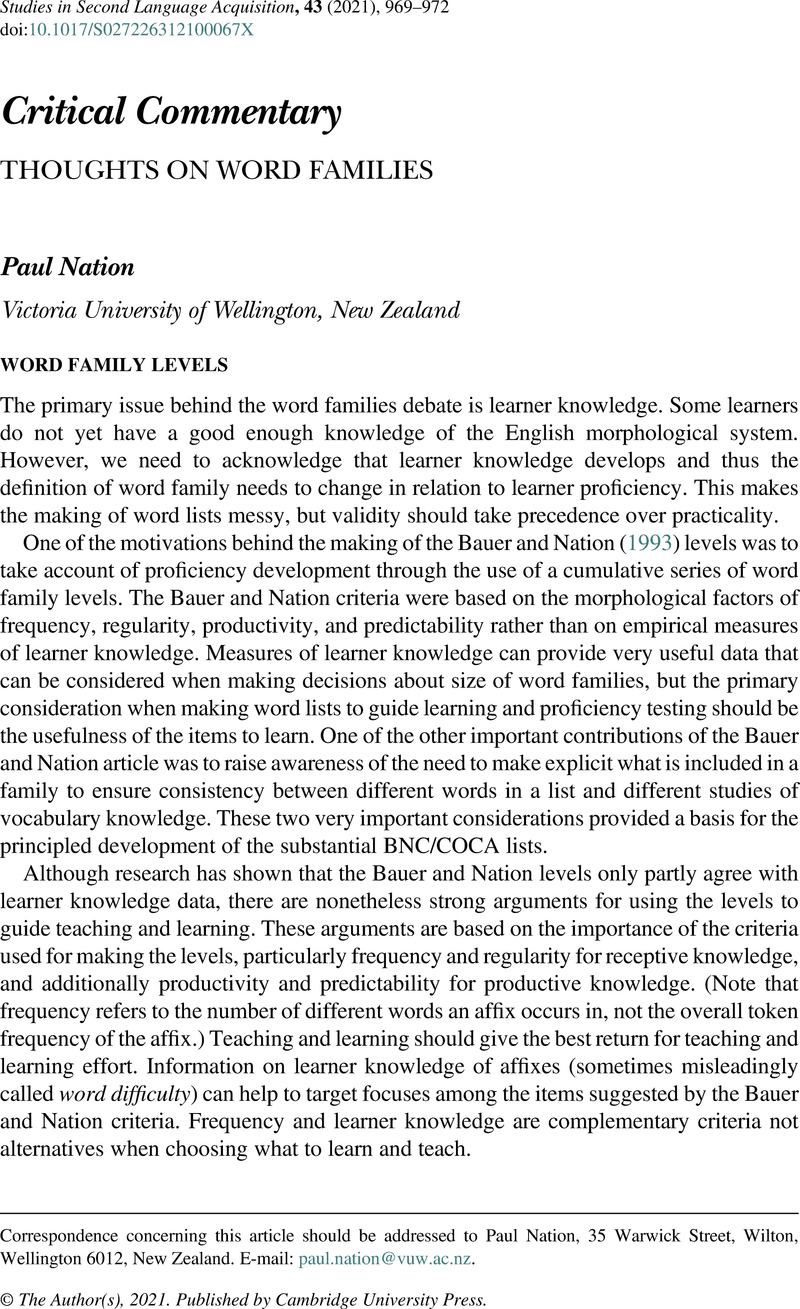Crossref Citations
This article has been cited by the following publications. This list is generated based on data provided by Crossref.
Webb, Stuart
2021.
WORD FAMILIES AND LEMMAS, NOT A REAL DILEMMA.
Studies in Second Language Acquisition,
Vol. 43,
Issue. 5,
p.
973.
Lyashevskaya, Olga Nikolaevna
Pyzhak, Julia Vyacheslavovna
and
Vinogradova, Olga Il'inichna
2022.
Word-formation complexity: a learner corpus-based study.
Russian Journal of Linguistics,
Vol. 26,
Issue. 2,
p.
471.
Iwaizumi, Emi
and
Webb, Stuart
2023.
To What Extent Do Learner‐ and Word‐Related Variables Affect Production of Derivatives?.
Language Learning,
Vol. 73,
Issue. 1,
p.
301.
Vilkaitė-Lozdienė, Laura
and
Vilkienė, Loreta
2023.
Vocabulary size estimates for Lithuanian native speakers.
ITL - International Journal of Applied Linguistics,
Vol. 174,
Issue. 2,
p.
177.
Behzadnia, Ali
Ziegler, Johannes C.
Colenbrander, Danielle
Bürki, Audrey
and
Beyersmann, Elisabeth
2023.
The role of morphemic knowledge during novel word learning.
Quarterly Journal of Experimental Psychology,
Ha, Hung Tan
Le, Linh Thi Thao
Ho, Nam Thi Phuong
and
Trang, Nguyen Huynh
2023.
Measuring native‐speaker vocabulary size. PaulNation and AverilCoxhead, John Benjamins Publishing Company, Amsterdam/Philadelphia, 2021, xiii, 160 pp., Hardbound: ISBN 9789027208149, EUR 95.00; Paperback: ISBN 9789027208132, EUR 33.00; e‐Book: ISBN 9789027260291, EUR 95.00.
International Journal of Applied Linguistics,
Vol. 33,
Issue. 1,
p.
88.
Matthews, Joshua
Milliner, Brett
and
McLean, Stuart
2023.
Can Learners Understand Words with Derivational Affixes and Does Presence of Context Make a Difference?.
RELC Journal,
Volodina, Elena
Mohammed, Yousuf Ali
and
Tiedemann, Therese Lindström
2024.
Swedish word family resource.
ITL - International Journal of Applied Linguistics,






